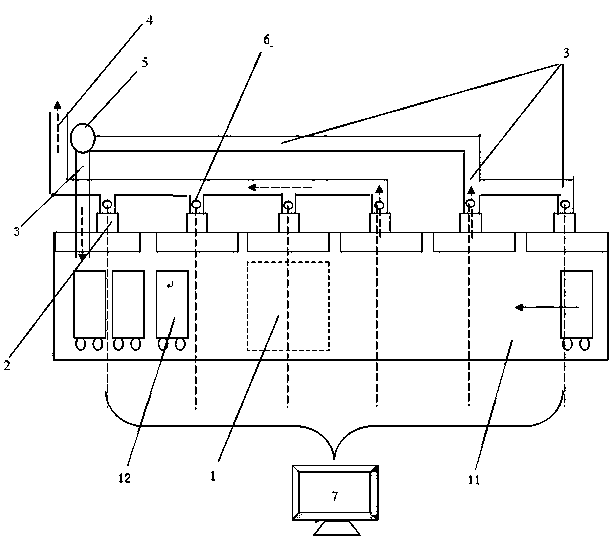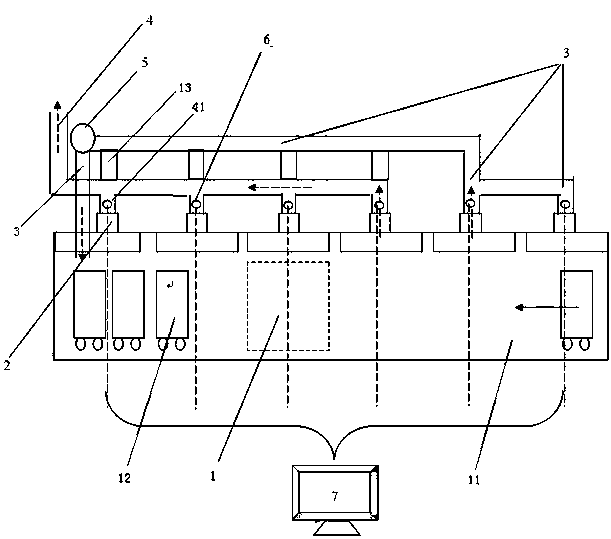Waste heat recovery energy-saving drying oven and waste heat recovery method thereof
A waste heat recovery and oven technology, applied in drying, dryer, heating device and other directions, can solve the problems of poor drying effect, consume more heat, affect heat utilization rate, etc., to reduce energy consumption and improve drying. Drying efficiency, complete heat recovery effect
- Summary
- Abstract
- Description
- Claims
- Application Information
AI Technical Summary
Problems solved by technology
Method used
Image
Examples
Embodiment Construction
[0018] The following will clearly and completely describe the technical solutions in the embodiments of the present invention with reference to the accompanying drawings in the embodiments of the present invention. Obviously, the described embodiments are only some, not all, embodiments of the present invention. Based on the embodiments of the present invention, all other embodiments obtained by persons of ordinary skill in the art without making creative efforts belong to the protection scope of the present invention.
[0019] figure 1 , figure 2 Shows a schematic structural view of an embodiment of an energy-saving oven for waste heat recovery and utilization in the present invention, including: a furnace body (overall structure), a hot air supply system 15, a hot air supply pipeline 11, a dehumidifier 5, and a return unit connected to the dehumidifier 5 With the pipeline 3, the dehumidifying air pipeline 4, the temperature and humidity detector 6, the automatic adjustment...
PUM
 Login to View More
Login to View More Abstract
Description
Claims
Application Information
 Login to View More
Login to View More - R&D
- Intellectual Property
- Life Sciences
- Materials
- Tech Scout
- Unparalleled Data Quality
- Higher Quality Content
- 60% Fewer Hallucinations
Browse by: Latest US Patents, China's latest patents, Technical Efficacy Thesaurus, Application Domain, Technology Topic, Popular Technical Reports.
© 2025 PatSnap. All rights reserved.Legal|Privacy policy|Modern Slavery Act Transparency Statement|Sitemap|About US| Contact US: help@patsnap.com



